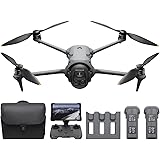The recent incidents highlighted in the video — from drone incursions causing temporary airport closures in Copenhagen and Oslo to sophisticated hacking operations impacting major hubs like London Heathrow — underscore a palpable shift in the geopolitical security landscape. These events are not isolated; they represent a significant escalation of hybrid threats designed to sow discord, test defensive capabilities, and project power, directly impacting European security. As Ukraine’s President Volodymyr Zelenskyy suggests, these actions by Moscow serve as probing exercises, leveraging the ongoing conflict as a testing ground for various forms of aggression against Europe’s readiness.
The narrative is clear: state actors are employing a multi-faceted approach, blending kinetic and non-kinetic tactics to destabilize and exert pressure. This includes the overt violation of sovereign airspace by both uncrewed aerial systems (UAS) and crewed aircraft, alongside insidious cyber campaigns targeting critical national infrastructure. Understanding the strategic intent behind these maneuvers is crucial for shaping an effective, robust response across the continent.
Understanding the New Battlefield: Hybrid Threats to European Security
The concept of hybrid warfare is far from new, yet its contemporary manifestation presents novel challenges for European security architectures. It describes a military strategy that combines conventional, irregular, and cyber warfare with other influencing tactics, such as disinformation, economic coercion, and political interference. What we are currently witnessing across Europe is a live demonstration of these tactics in action, often orchestrated as a coordinated campaign.
For instance, the video details how around 20 Russian drones entered Polish airspace on September 9th, followed swiftly by a similar violation in Romania four days later. These are not random acts. They are calibrated probes, designed to assess the response times, detection capabilities, and overall resolve of NATO member states. Coupled with Russian jets entering Estonian airspace, a pattern emerges that points towards a deliberate strategy of escalation and intimidation. Estonian Defense Minister Hanno Pevkur rightly warns of critical shortfalls, especially concerning lower altitude detection capabilities, a vulnerability painfully exposed during the Polish incident where many drones went undetected.
1. **Kinetic Probes: Drone Incursions and Airspace Violations**
The use of drones in modern warfare has been revolutionized by the conflict in Ukraine, pushing the boundaries of their operational utility. Long-distance drones, whether for reconnaissance or potential strike missions, represent a formidable challenge to traditional air defense systems. These platforms offer deniability and cost-effectiveness, making them ideal for probing hostile or sensitive airspace. The temporary closures at Copenhagen and Oslo airports, directly attributed to drone incursions, illustrate the immediate disruptive potential, causing significant economic and logistical ramifications even without direct physical attack.
Moreover, violations by crewed aircraft, such as the Russian jets in Estonian airspace, carry a different, more overtly aggressive message. They are clear demonstrations of capability and intent, designed to test the boundaries of NATO’s collective defense and prompt a reaction, or lack thereof. Each incident provides valuable intelligence to the aggressor about response protocols, radar coverage, and decision-making processes, thereby enhancing their understanding of an adversary’s vulnerabilities. The repeated nature of these events underscores a strategic patience in Moscow’s approach to testing European security.
2. **The Digital Front: Cyberattacks on Critical Infrastructure**
Parallel to kinetic probes, the digital domain remains a critical vector for hybrid aggression. The hacking operation that disrupted three European airports, including London Heathrow, serves as a stark reminder of the fragility of digitized systems in our interconnected world. These cyberattacks can range from distributed denial-of-service (DDoS) campaigns, which overwhelm systems, to more sophisticated infiltrations aimed at data exfiltration or operational disruption.
The motive behind such attacks can vary — from ransomware demands to deliberate acts of sabotage intended to create widespread chaos and erode public trust. Regardless of the immediate objective, the underlying message is one of vulnerability. Airports, being critical nodes in a nation’s transportation network, are prime targets. A successful cyberattack on air traffic control, baggage handling systems, or security protocols can cripple operations, causing significant economic damage and instilling a sense of insecurity among the populace. This digital dimension of hybrid warfare complements kinetic actions, often preceding or accompanying them to maximize psychological impact and operational disruption.
Exposed Flanks: Addressing NATO’s Defensive Gaps
The increasing frequency and sophistication of these hybrid threats expose significant vulnerabilities within existing European security frameworks, particularly concerning NATO defense capabilities. The candid admission by Estonia’s Defense Minister, Hanno Pevkur, regarding “gaps” in lower altitude detection capabilities across all NATO countries, highlights a pressing challenge. This is not merely a technical issue; it’s a strategic one that demands immediate attention and investment.
1. **The Low-Altitude Challenge: Detecting Asymmetric Threats**
Traditional air defense systems are primarily designed to detect and intercept larger, faster, and higher-flying conventional aircraft or ballistic missiles. Small, slow-moving drones, especially those flying at very low altitudes or utilizing stealth technologies, often slip through these established radar nets. This makes them ideal tools for asymmetric warfare, where a smaller, less technologically advanced adversary can leverage low-cost platforms to challenge a superior conventional force. The “many” drones that went undetected during the Polish incident exemplify this blind spot.
Addressing this requires a multi-layered, integrated approach. It involves deploying specialized radar systems optimized for small target detection, integrating acoustic and optical sensors, and leveraging advanced artificial intelligence and machine learning algorithms for pattern recognition. Furthermore, effective counter-unmanned aerial systems (C-UAS) solutions, encompassing electronic warfare jamming, kinetic interceptors, and cyber counter-measures, are essential for neutralizing these threats once detected. This comprehensive sensor-to-shooter chain must be seamlessly integrated into national and NATO command and control structures to ensure rapid response.
2. **Fragility in a Digitized World: Cybersecurity Vulnerabilities**
Beyond the physical airspace, the digital infrastructure underpinning modern societies remains critically exposed. The dependency on interconnected cyber-physical systems across sectors like energy, transport, finance, and telecommunications means that a breach in one area can cascade rapidly, creating widespread disruption. The experts in the video rightly point out that such fragility is inherent in a digitized world.
To mitigate this, a robust cybersecurity posture is paramount. This includes implementing stringent cyber hygiene protocols, continuous vulnerability assessments, real-time threat intelligence sharing among member states, and developing rapid incident response capabilities. Investment in resilient network architectures, data encryption, and robust identity management systems is foundational. Moreover, fostering a culture of cybersecurity awareness from the operational floor to the executive suite is vital. The human element often remains the weakest link, making training and education a critical component of national cyber defense strategies. The overarching goal must be to build resilience, allowing systems to absorb attacks and recover quickly, thereby limiting the impact of even successful breaches.
Fortifying the Frontier: Strategic Responses to Hybrid Aggression
Faced with growing uncertainty and a persistent, coordinated campaign of hybrid aggression, European defense ministers are actively exploring collective responses. The concept of a “drone wall” is one such initiative, reflecting a recognition that individual national efforts alone may be insufficient to tackle the scale of these contemporary threats. A holistic, integrated approach to European security is not merely desirable; it is imperative.
1. **The “Drone Wall” Concept and Integrated Air Defense**
The proposed “drone wall” signifies a strategic commitment to creating a coherent, interoperable defensive perimeter against UAS threats across national borders. This would involve standardizing C-UAS technologies, sharing real-time intelligence, and coordinating response protocols. Such a system would ideally integrate diverse sensor arrays (radar, electro-optical, acoustic) with various effectors (jammers, kinetic interceptors, cyber tools) to provide comprehensive coverage against low-altitude, asymmetric threats.
Implementing a “drone wall” also implies harmonizing regulations and legal frameworks concerning drone operations and interceptions across EU and NATO member states. This multi-national undertaking requires significant investment, technological cooperation, and political will. It moves beyond individual national air defense zones to embrace a collective, regional approach, acknowledging that airspace violations and cyberattacks respect no borders. This integrated layered defense must be agile, adaptive, and scalable to counter an evolving threat landscape.
2. **Beyond Technology: Resilience and Collective Security**
While technological solutions are vital, addressing hybrid threats to European security requires a broader strategy focusing on resilience and collective security. This includes enhancing intelligence, surveillance, and reconnaissance (ISR) capabilities, particularly in border regions, to provide early warning and improve situational awareness. Developing advanced geospatial intelligence and open-source intelligence (OSINT) analysis can offer deeper insights into adversary intentions and capabilities.
Crucially, reinforcing collective security mechanisms within NATO and the EU means not only sharing technology and intelligence but also conducting joint exercises that simulate hybrid attack scenarios. These exercises help identify procedural gaps, improve interoperability, and strengthen rapid response mechanisms. Furthermore, coordinated diplomatic and economic responses to acts of aggression are essential to deter future attacks. The aim is to build a robust, comprehensive security posture that deters aggression, defends against multifaceted attacks, and ensures the long-term stability and integrity of European security.











